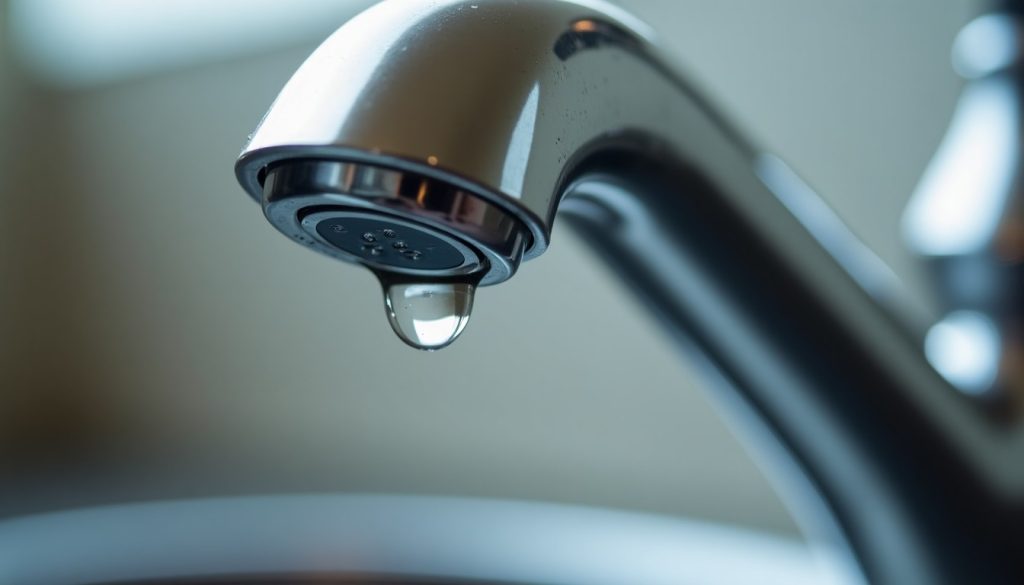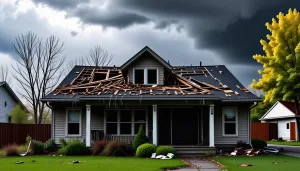Recognizing the signs of plumbing leaks early can make a significant difference in managing home maintenance costs, preventing extensive damage, and ensuring the overall safety of your home. Common plumbing leaks can occur in various forms, often hiding in the most unexpected places. By understanding where these leaks are likely to develop and how to spot them, homeowners can take proactive steps in preventing further complications.
One of the most frequently encountered plumbing issues is dripping faucets. While it might seem minor, a faucet that drips once per second can waste up to 3,000 gallons of water a year. This persistent loss not only increases your water bill but can also indicate a need for repairs in the faucet’s inner components such as washers, seals, or O-rings.
Toilets are another common source of leaks. Often silent and indiscernible until a significant water bill arrives, toilet leaks can stem from faulty flappers, worn-out fill valves, or improperly adjusted water levels. An easy way to test for toilet leaks is to add a few drops of food coloring to the tank. If the color appears in the bowl within 15 minutes, a leak is present.
Perhaps more insidious are the invisible leaks that occur within the walls or ceilings due to cracked or corroded pipes. These leaks can lead to devastating water damage, weakening structural integrity, prompting mold growth, and causing significant home maintenance costs. Signs of such leaks include damp spots, discoloration, and unexpected water pooling.
Outdoor faucets and irrigation systems can also be sources of leaks. With exposure to varying weather conditions, these installations can develop cracks or wear which can lead to water wastage and unnecessary expenditure. Regular checkups and winterizing these systems can help catch small issues before they escalate.
For a visual comparison of possible household leaks and a guide to identifying them, consider the following table:
| Leak Source | Indicator | Potential Consequence |
| Dripping Faucets | Constant dripping sound | Increased water bills |
| Leaky Toilets | Unexpected water level changes, food coloring test | High water usage |
| Hidden Pipe Leaks | Stains, mold, dampness | Structural damage, health risks |
| Outdoor Faucets | Water pooling, visible cracks | Water wastage, repair costs |
By regularly inspecting these common problem areas, homeowners can stay ahead of potential issues. Such vigilance not only helps in maintaining a healthy plumbing system but also in reducing unexpected expenses and safeguarding the home environment. Engaging a professional plumber for a comprehensive inspection can further ensure that hidden leaks are identified and addressed promptly. This proactive approach is crucial for efficient home maintenance and helps in sustaining property value over time.
Factors affecting repair costs
When it comes to addressing plumbing leaks, the cost of repairs can vary significantly based on a multitude of factors. Understanding these variables can provide homeowners with a better sense of potential expenses and help them plan more effectively. Here’s a breakdown of the key factors that typically influence repair costs for leaks:
- Type of Leak:
The nature of the leak is perhaps the most significant determinant of cost. A dripping faucet might require a simple washer replacement, while a leak in a hidden pipe behind walls could involve more extensive work, including opening up wall sections and replacing damaged drywall.
- Location of the Leak:
Leaks occurring in easily accessible areas like under sinks are generally less expensive to fix as compared to those located behind walls, under floors, or in ceilings. The latter may necessitate more labor and potentially cause additional restoration work, driving up costs.
- Materials Required:
The type of material needed for repairs—such as copper, PVC, or PEX piping—affects the total cost. Copper pipes, for instance, are more expensive than PVC, both in terms of material and installation. Additionally, certain specialty components may be required for specific repair situations.
- Extent of the Damage:
If a leak has been undetected for an extended period, it may have caused secondary damage like mold growth or structural issues in the home. Addressing such damage can lead to increased repair costs beyond just fixing the leak itself.
- Labor Rates:
Local labor rates can also impact the overall cost of fixing plumbing leaks. Rates vary based on geographical location, the plumber’s level of expertise, and market demand for plumbing services. Sometimes, emergency plumbing services, particularly outside of regular business hours, come with additional fees.
- Permits and Inspections:
Certain plumbing repairs, particularly those involving main water supply lines or sewer lines, may require permits and inspections to ensure compliance with local building codes. These permits add to the overall cost and can also affect the timeline of the repair.
- Replacement vs. Repair:
In some cases, replacing old or outdated plumbing components might be more cost-effective or necessary than repairing them. For instance, replacing corroded pipes can prevent future leaks and additional repair costs.
Homeowners are encouraged to obtain multiple estimates for plumbing repairs to ensure they are getting fair pricing. Additionally, understanding these factors can aid in negotiations with a plumbing professional, potentially leading to savings in home maintenance costs. It’s important to remember that timely and effective repairs can prevent larger expenses down the line, making a proactive approach to home plumbing management a wise investment.
Average costs for minor leaks
When it comes to addressing minor plumbing leaks in your home, a clear understanding of average repair costs can offer peace of mind and assist in budgeting for necessary home maintenance. Minor leaks, though seemingly insignificant, shouldn’t be underestimated as they can lead to water wastage and may also be symptomatic of underlying issues if left unattended.
Dripping faucets, often the most visible form of minor leaks, are typically straightforward to fix. The cost of repairing such issues largely hinges on the specific component in need of replacement or adjustment. A simple washer replacement can cost as little as $50 to $150, depending on the faucet type and the plumber’s service rate. While these leaks might seem trivial, fixing them promptly can reduce water wastage and ultimately lower your water bills.
Leaky toilets are another prevalent issue that can incur costs ranging from $75 to $200. The expenses vary based on the cause of the leak. Replacement of a worn-out flapper valve is usually on the lower end of the cost spectrum, whereas addressing issues with the fill valve or float mechanism may require more comprehensive intervention and slightly higher costs.
Outdoor faucets and minor leaks in irrigation systems often involve similar cost considerations. Repairing a leaking outdoor spigot may range from $100 to $200, largely depending on the accessibility and complexity of the repair. These repairs are essential as external leaks can contribute to significant water wastage, especially during summer months when water usage peaks.
Costs for addressing minor leaks, such as those occurring under sinks, start around $100 but can escalate depending on the materials involved and the need for additional repairs like sealing or replacing fittings that may have corroded. It’s also worth considering that leaks in commonly used areas are usually easier and cheaper to manage due to ease of access.
The investment in repairing minor leaks is a valuable one, especially given the potential for these small issues to develop into larger, more costly problems over time. Homeowners are encouraged to remain vigilant, identifying and addressing minor plumbing issues as soon as they arise. This proactive stance not only aids in keeping home maintenance costs in check but also helps maintain the efficiency and longevity of your home’s plumbing system. Acting promptly on minor leaks conserves water and reduces the likelihood of incurring more extensive repair costs in the future.
Expenses involved in pipe replacement
When considering the expenses involved in pipe replacement, it’s important to recognize that these repairs are often necessary when pipes are beyond simple patch-up solutions and require more extensive work. The costs associated with replacing pipes can vary widely, influenced by several factors, including the type of plumbing material, the complexity of the work required, and the specific conditions of your home.
One of the primary determinants of cost in pipe replacement is the type of material used. Copper pipes, known for their durability and reliability, tend to be more expensive than alternatives like PVC or PEX. However, copper’s longevity and ability to handle extreme temperatures can be worth the investment for many homeowners. On the other hand, PVC pipes are cost-effective and easier to install, which can reduce labor expenses. PEX piping, known for its flexibility and resistance to scale build-up, is becoming increasingly popular and serves as a middle-ground in terms of cost and ease of installation.
The complexity of the pipe replacement project also plays a major role in determining expenses. Replacing pipes in easily accessible areas like basements or crawl spaces is generally less costly compared to those located behind walls or beneath floors. In such cases, labor costs may increase significantly due to the need for more invasive procedures, such as cutting through walls and restoring surfaces afterward. This makes understanding the layout of your home’s plumbing system crucial in anticipating potential costs.
Another influential factor is whether additional repairs are necessary. Sometimes, pipe replacement requires updates to related plumbing components or systems. For instance, in older homes, replacing pipes might entail upgrading outdated fixtures or connecting new pipes to existing systems, thus increasing the overall expense. Moreover, in situations where pipe corrosion has caused collateral damage to other parts of the home’s infrastructure, addressing these issues becomes an essential yet costly part of the replacement process.
The geographical location of your home and local labor rates also significantly impact the cost. Urban areas with a high cost of living often have elevated labor rates, while rural locations might offer more competitive pricing but can also face limited availability of skilled professionals, potentially affecting project timelines.
It’s advisable for homeowners to seek multiple estimates from qualified plumbing professionals to ensure fair pricing and understand the scope of work involved. This not only helps in budgeting effectively for such critical repairs but also provides peace of mind knowing that informed decisions are being made. Pipe replacement is a significant investment, but a necessary one to ensure your home’s plumbing system operates efficiently, reducing future home maintenance costs and preventing more severe issues down the line.
In summary, while the initial outlay for pipe replacement can be substantial, the benefits of ensuring a leak-free and dependable plumbing system ultimately protect your home from potential water damage, conserve water usage, and maintain the property’s value. By carefully evaluating the options and choosing the right materials and professionals for the job, homeowners can navigate this necessary aspect of home maintenance confidently.
Tips to prevent future leaks
Keeping your home’s plumbing system leak-free requires a proactive approach and regular maintenance. By implementing several straightforward preventative measures, homeowners can significantly reduce the likelihood of experiencing plumbing leaks and the associated home maintenance costs.
First and foremost, conducting regular inspections of your plumbing system can help catch potential problems before they escalate. Periodically check visible pipes for signs of corrosion, leaks, or loose connections. Look for any signs of moisture or discoloration, particularly around water appliances like dishwashers and water heaters, where leaks often start subtly but can cause extensive damage over time.
Insulating pipes, especially those exposed to colder temperatures, can prevent them from freezing and bursting during the winter months, a common cause of leaks. Insulation sleeves or wraps are inexpensive solutions that can safeguard your plumbing during cold snaps.
Monitoring your water bill is another effective way to detect unseen leaks. An unexpected increase could indicate a hidden issue within your plumbing system. Investigating promptly can prevent the problem from growing larger and more costly.
Additionally, practicing moderate water pressure management can prolong the life of your plumbing system. High water pressure strains pipes and fixtures, potentially leading to leaks. A pressure-reducing valve can maintain an ideal pressure level, saving both water and reducing wear on plumbing components.
Equip your home with high-quality plumbing fixtures and regularly replace washers and seals as they wear out. Opt for components that are compatible with your system and seek professional help if you’re unsure about installation. High-quality fixtures last longer and are less likely to develop leaks.
Finally, investing in regular professional plumbing inspections can guarantee a thorough evaluation of your system. Experienced plumbers can identify potential issues that might escape a homeowner’s notice, ensuring any necessary repairs are conducted before they lead to more significant damage.
By following these tips, homeowners can effectively maintain their plumbing systems, preventing leaks from occurring and minimizing unexpected repair costs. Although these preventive measures involve an initial investment, they offer considerable savings and peace of mind in the long run, helping to maintain an efficient and reliable home plumbing network.
In conclusion, managing the costs associated with plumbing repairs effectively hinges on diligent maintenance and prompt attention to issues as they arise. By staying informed about common plumbing problems, understanding the factors that influence repair costs, and being proactive in both identifying and preventing leaks, homeowners can safeguard their properties against extensive damage and unnecessary expenses. Through careful planning and regular professional checkups, ensuring a functional and leak-free plumbing system is an achievable goal, contributing to the overall value and integrity of your home.





